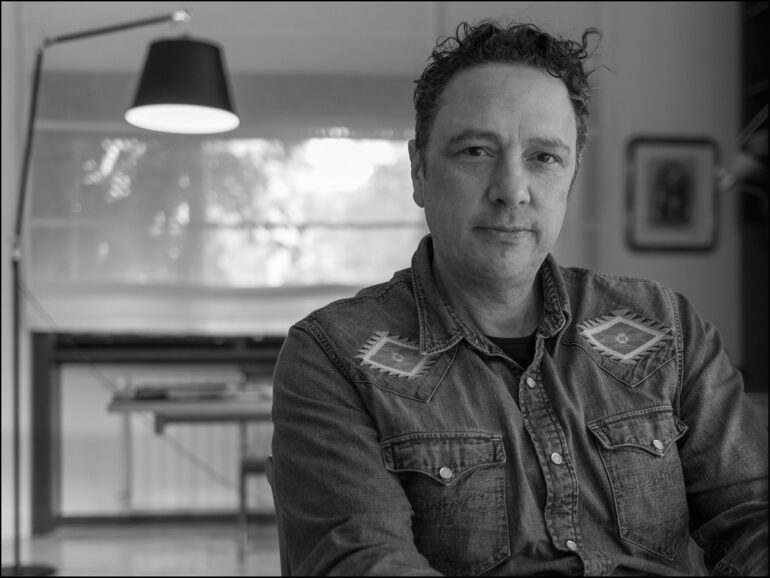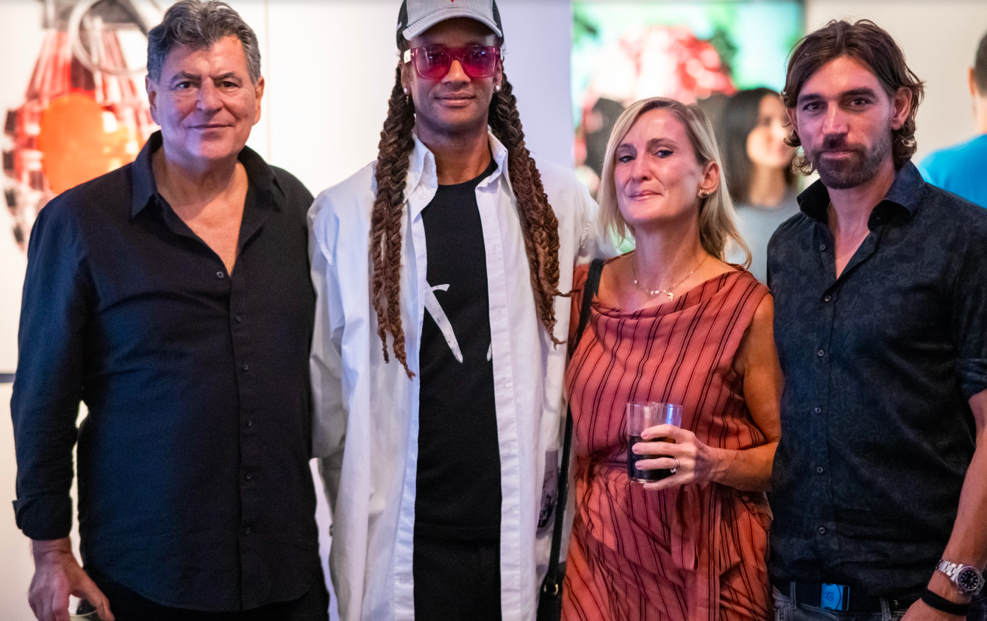Steven Seidenberg is an artist and writer whose work inhabits the in-between – where history frays into silence, and where the traces of human endeavor linger in ruins, absences, and forgotten architectures. Through his international photographic practice, he documents spaces marked by memory and neglect: from the abandoned farmhouses of Southern Italy’s failed Riforma Fondiaria to the vacant homes and lots of Kanazawa, Japan. Whether in collaboration with anthropologist Carolyn White or through his own explorations, Seidenberg’s images unfold as meditations on fragility, vacancy, and the politics of place. They ask us to see beyond the surface of decay, to consider how absence itself can speak, how silence can become a form of testimony. In this conversation, Seidenberg reflects on the aesthetic and ethical dimensions of photographing what has been left behind – and what it means to bear witness to landscapes of loss and transformation.
Your work often focuses on what you’ve described as “liminal spaces.” What first drew you to these in-between sites–ruins, abandoned homes and forgotten lots–and how do you see them operating as both documents of history and poetic spaces?
Focus on the perceptual cloisters that consolidate beside the directed attentions of teleological––which is to say, productive––movement through the world reveals the material and ideological traces of what’s sacrificed, what’s lost in the manufacture of our narratives of progress and redemption. It’s a mode of seeing that constitutes a novel seeing through, and allows us to dislodge our own arcanum of minutiae of resemblances from the maze of mirrors that actuates the ego as a substance in-itself, beyond its material exigencies and related slough. As such, these attentions and the works that are resultant constitute a kind of ecstatic unconcealment, a self-transcendence that returns us to the perceptual immanence and decadence of our materiality.
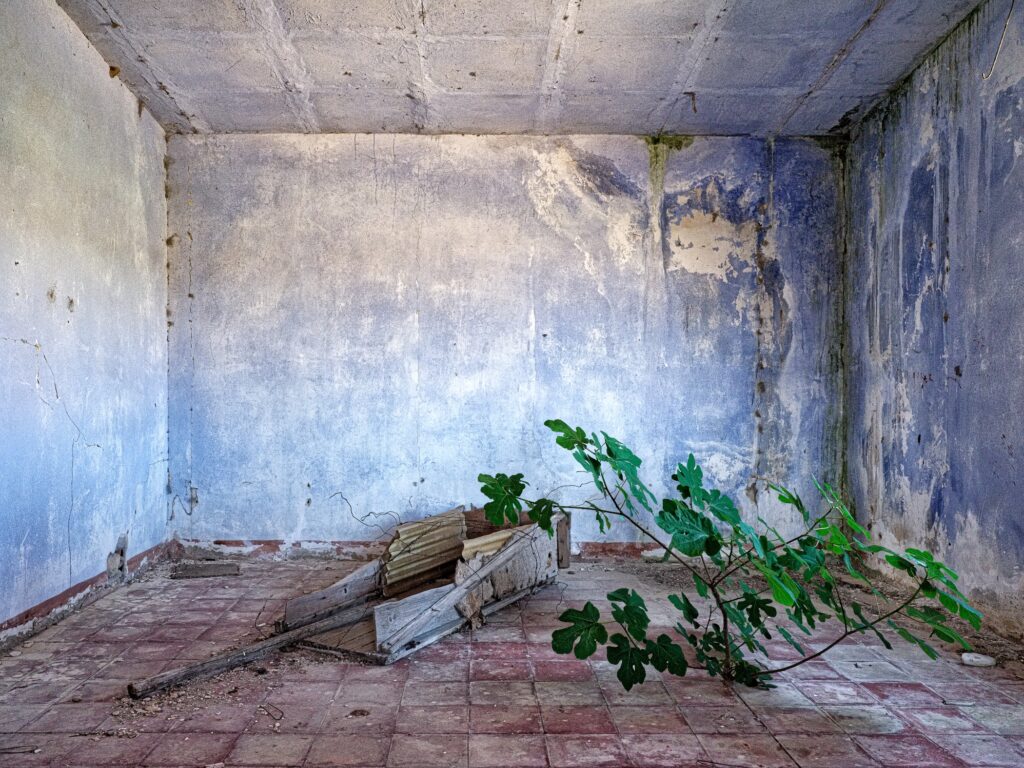
In The Architecture of Silence, you engage with the aftermath of the Riforma Fondiaria in Southern Italy. How do you balance the anthropological rigor of documenting a failed land reform with the artistic impulse to render these spaces with fragility and lyricism?
It’s a delicate imperative, as you suggest, and one that leverages so many of the tropes of lens-based art. In my practice, there is always an understanding of the responsibility, aesthetic and moral, of such documentary or indexical work––to its object and its audience alike. Such responsibility can’t be that of the historian or the archivist; as an artist, there is a direct imperative to counter the positionality of the receiver of the work––whether intending to inspirit pathos or repulsion, anger or delight, but always pushing towards this species of directed revelation and engagement.
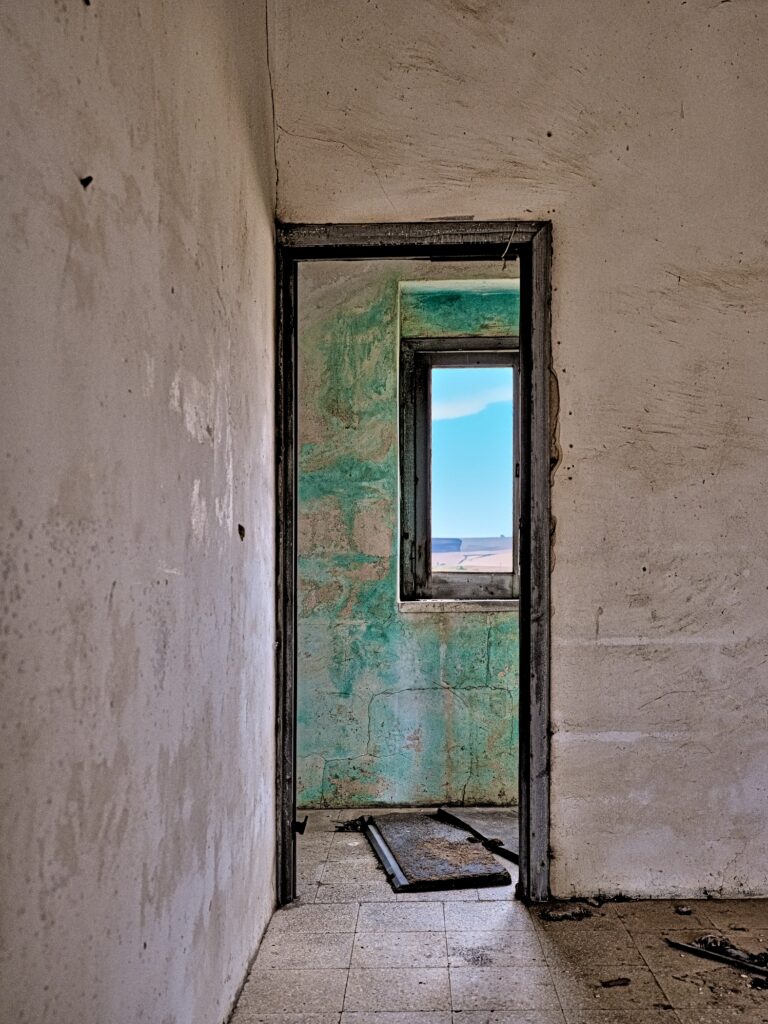
Collaboration is central to your practice, particularly with Carolyn White, whose background in anthropology intersects with your work as an artist and writer. How does this partnership shape the way you approach a project, both in the field and in the studio?
Interestingly––perhaps surprisingly––working with Carolyn allows me to forget my practice as a writer in the making of my visual work. Over the course of many projects together, we’ve developed a kind of trust in our process, a process contrary to that of many other collaborations between artist and social scientist in allowing my compositional impulses to define both the particulars of the project and the character of its scope, with Carolyn using the series to frame a descriptive architecture of the broader project. Her role is not merely in such analysis, though, but continues after capture and processing of the images as a curator, often participating in conceiving the conceits of exhibiting the work, and contributing to the choice of prints and materials for those exhibitions.
The sites you photograph often embody loss, whether it’s abandoned farmhouses in Italy or the empty lots of Kanazawa. What, for you, is the role of absence in visual storytelling?
An objective field delimited by the framing of the image holds within it nothing but variations of color and tone. As such, absence in the image is merely a caprice of indistinction––an uninterrupted tonal field, as a clear sky, or a field of repetition, as the gravel of a vacant lot, set against the variegated complexities that populate other portions of the frame. Which is all to say that absence in the image is both a narrative device and a form of compositional striation, and I find it most effective to use each in concert and in contradiction. Thus the absence of humans in my photography is a kind of implied tragedy when that absence is discerned through an exploration of their traces, whether in the context of active or abandoned sites, and requires the posturing of negative space within the image accordingly
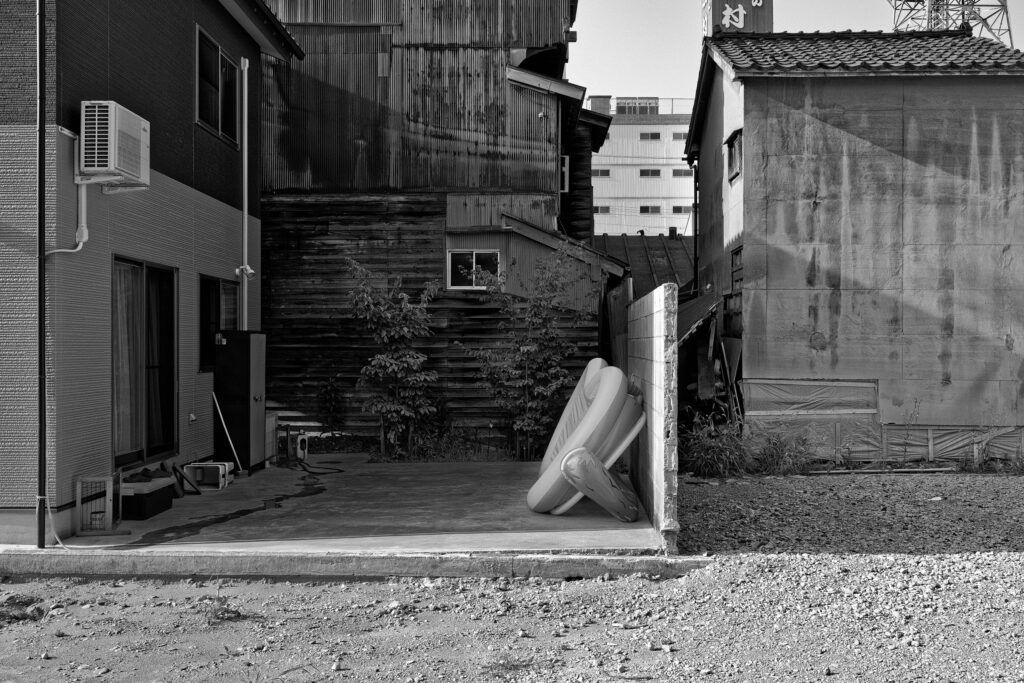
In Kanazawa Vacancy, you examine akiya and akichi within a city that survived wartime destruction but now faces depopulation and de-densification. How do you see these spaces speaking not only to Japan’s urban history but also to broader questions of modern urban futures?
This process of depopulation and movement is nothing new at all––it’s equally revealed by other demographic and environmental shifts in the archeological record, as cities disappear in one place and arise in another. In this way it resonates with human consciousness (perhaps all consciousness) from its origins; exploitation of resources is always caught in the tension between relatively immotile developmental processes and the eternally shifting mechanisms in which those processes are fixed. All sites, all homes, all lives are always in the course of dissolution, of abandonment, and with scant memory or awareness the material effects those lives have had and will have upon the micro and macro landscapes they traverse. Such responses will become more and more evident as climatological shifts accelerate, as will the ways in which this evidence is shuttled into the liminality we spoke of earlier in the interview.
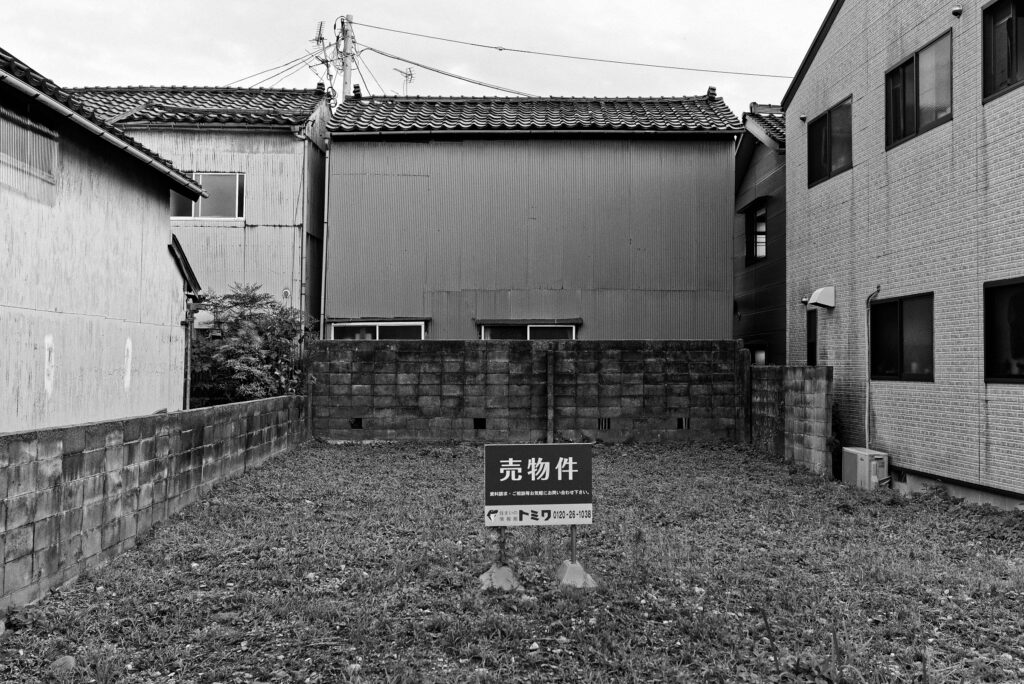
Your projects move fluidly between continents, yet they share a focus on the overlooked or forgotten. Do you see a common thread running between Italy’s ghostly ruins and Japan’s vacant houses, or are these silences culturally distinct?
Indeed, the material necessity of the movement through our changing access to resources ensures the connection between every act of abandonment and reoccupation in the post-industrial period. There is nonetheless great cultural distinction in the character of the responses to these traces of lost lives and lifeways, differences that are often evident in the efforts at preservation and memorialization, or the attempts at precisely the opposite, as in the Riforma structures and the practices associated with their occupation. These differences are not merely national, or local, but often hyper local; the Riforma in Basilicata/Matera resonates quite differently than it does in Altamura/Puglia, a few miles away.
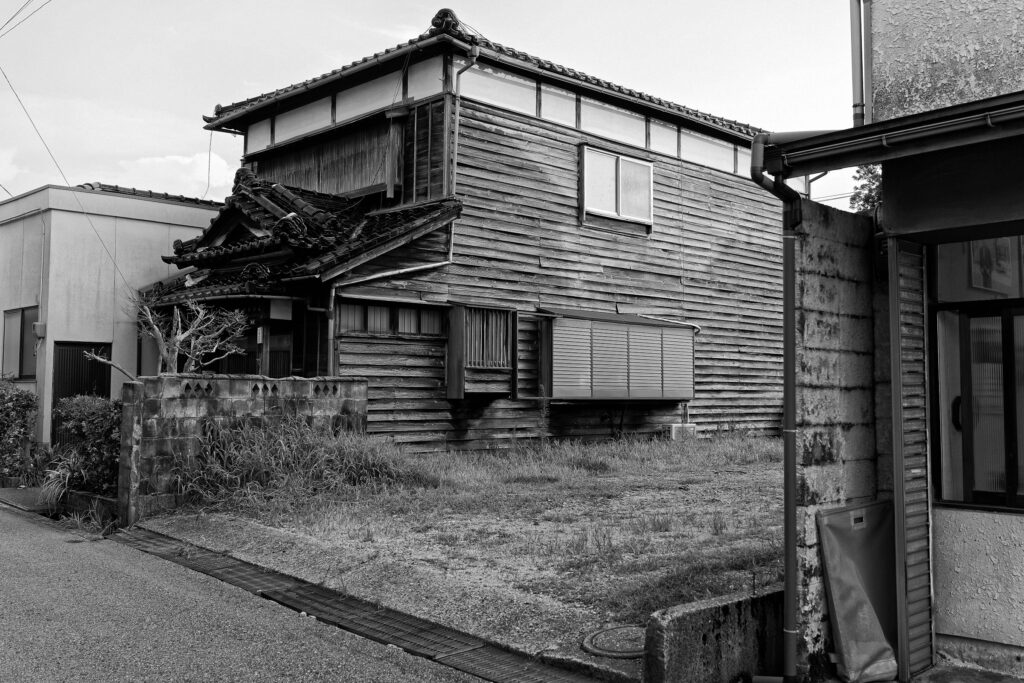
Much of your practice sits at the crossroads of art, anthropology, and memory. How do you hope viewers will engage with your photographs–not just as aesthetic objects, but as portals into larger social and historical narratives?
I don’t hope for a singular response, but that the work compels a multivalent set of meanings to emerge from each image, each series in kind, admitting that the aesthetic manipulation of the viewer is the pathway to those affective states. My mode of composition is contrived to force an empathic response, towards evoking an imagined life within the frame, rather than a sympathy for those whose circumstantial traces are inhumed therein––the latter a position always and only hierarchically exterior to those limned conditions. For some, this will entail a further investigation into the historical and social narratives of which you speak, for others the images will push them no further than an evocation of the possibility of those occluded narratives, those liminal spaces with which we began this conversation. Both responses are valuable in their own right. But there are also those who can’t find a justification for my practice of imaging what seems to them shameful or incidental, even degenerate, and this is also a response I value––recognizing that such visceral repulse lingers, and can prove a seed to germinate a further explanation of what would otherwise remain unwaveringly occulted, a limit point that’s never questioned for never being seen.
For more information visit: https://www.stevenseidenberg.com


